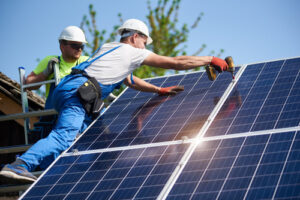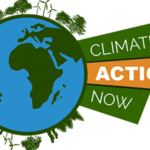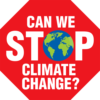Course Overview*
Session 1: Science & Problems
 Will we believe the science? Equally important, will we act on the science? We have to understand the facts and implications first – before we can act. Carbon dioxide levels, average global temperature, and sea levels are increasing every year with serious implications for all life on the planet, particularly human civilization. The World Bank estimates that by the year 2050 over one hundred million people will be on the road looking for a new place to live.\
Will we believe the science? Equally important, will we act on the science? We have to understand the facts and implications first – before we can act. Carbon dioxide levels, average global temperature, and sea levels are increasing every year with serious implications for all life on the planet, particularly human civilization. The World Bank estimates that by the year 2050 over one hundred million people will be on the road looking for a new place to live.\
Session 2: Climate Models
 Climate models are involved in putting science into action. We will review the online En-ROADS Climate Solutions Simulator. The Simulator provides graphic illustrations of how bold and immediate actions can bend the increasing amount of CO2 in our atmosphere and resulting yearly rise in average global temperature. Pushing levers in the Simulator will help us understand the impact (and sometimes lack thereof) of climate change actions and policies.
Climate models are involved in putting science into action. We will review the online En-ROADS Climate Solutions Simulator. The Simulator provides graphic illustrations of how bold and immediate actions can bend the increasing amount of CO2 in our atmosphere and resulting yearly rise in average global temperature. Pushing levers in the Simulator will help us understand the impact (and sometimes lack thereof) of climate change actions and policies.
Session 3: Renewables & Other Solutions
 Solar and wind have made amazing progress over the past decade. Installations have increased and costs have plummeted. Solar and wind now cost 25% of what they did 10 years ago. For most locations looking for a new source of energy, these are the cheapest alternatives. And other renewable sources like geothermal energy are growing — and becoming less expensive — as well. This session focuses on our progress in renewable energy, both for its own importance, and because it’s a great example of the way that many of the solutions we need for the climate crisis are already available.
Solar and wind have made amazing progress over the past decade. Installations have increased and costs have plummeted. Solar and wind now cost 25% of what they did 10 years ago. For most locations looking for a new source of energy, these are the cheapest alternatives. And other renewable sources like geothermal energy are growing — and becoming less expensive — as well. This session focuses on our progress in renewable energy, both for its own importance, and because it’s a great example of the way that many of the solutions we need for the climate crisis are already available.
Session 4: New Ways of Thinking
 Human beings have always adapted to changes in our environment, that’s a big reason why we’ve been so successful. We have proven to be resilient, smart and cooperative. Now we face a problem of our own making, the impact of burning fossil fuels on the livability of our planet. We are faced with the challenge of adapting and changing our attitudes and actions. This session will look at how our thinking and approaches need to change — and are already changing — in response to the climate crisis; the barriers we may encounter; and how ongoing development of new ideas might inform the actions we take.
Human beings have always adapted to changes in our environment, that’s a big reason why we’ve been so successful. We have proven to be resilient, smart and cooperative. Now we face a problem of our own making, the impact of burning fossil fuels on the livability of our planet. We are faced with the challenge of adapting and changing our attitudes and actions. This session will look at how our thinking and approaches need to change — and are already changing — in response to the climate crisis; the barriers we may encounter; and how ongoing development of new ideas might inform the actions we take.
Session 5: Getting Active
 The “Can We Stop Climate Change?” course has been designed to reach those who are already concerned, want to learn more, and employ that learning to become more vocal/active at any level. This final session will cover effective communication with others about climate change, and the wide range of options for how and where you can take concrete action. It includes time to think about what kinds of action particularly interest you, and plan for what you might like to do going forward.
The “Can We Stop Climate Change?” course has been designed to reach those who are already concerned, want to learn more, and employ that learning to become more vocal/active at any level. This final session will cover effective communication with others about climate change, and the wide range of options for how and where you can take concrete action. It includes time to think about what kinds of action particularly interest you, and plan for what you might like to do going forward.
*Note: this is the typical 5-session structure used in most of our courses. In some venues this may be altered slightly to include more or fewer sessions depending on the venue’s requirements, but we still generally cover the same topics.
